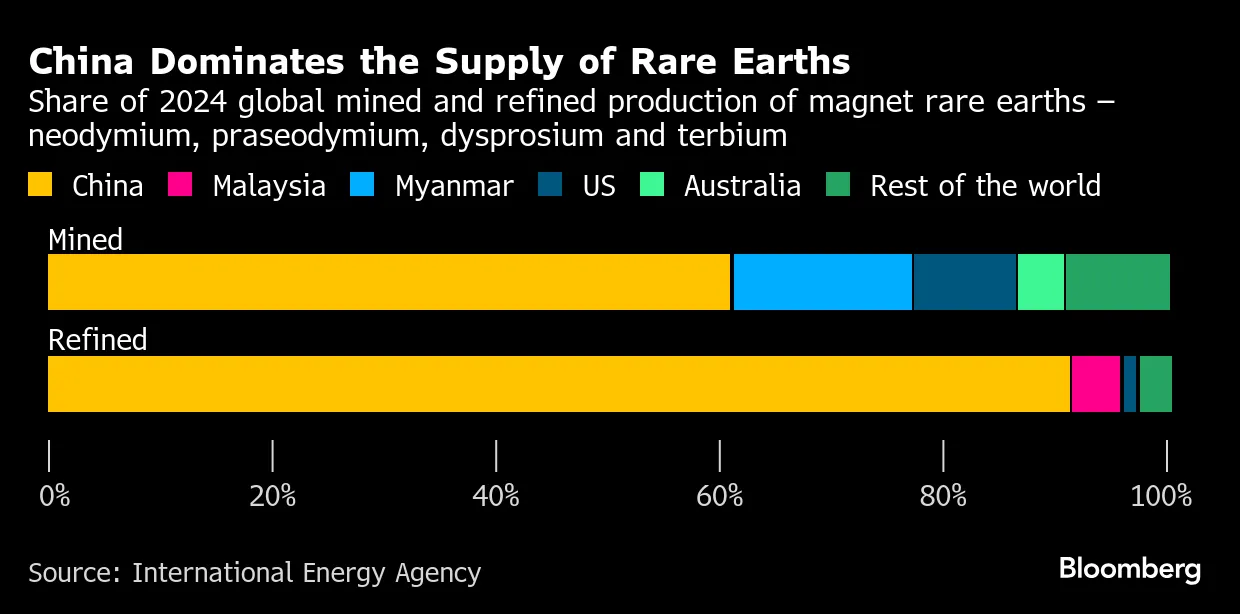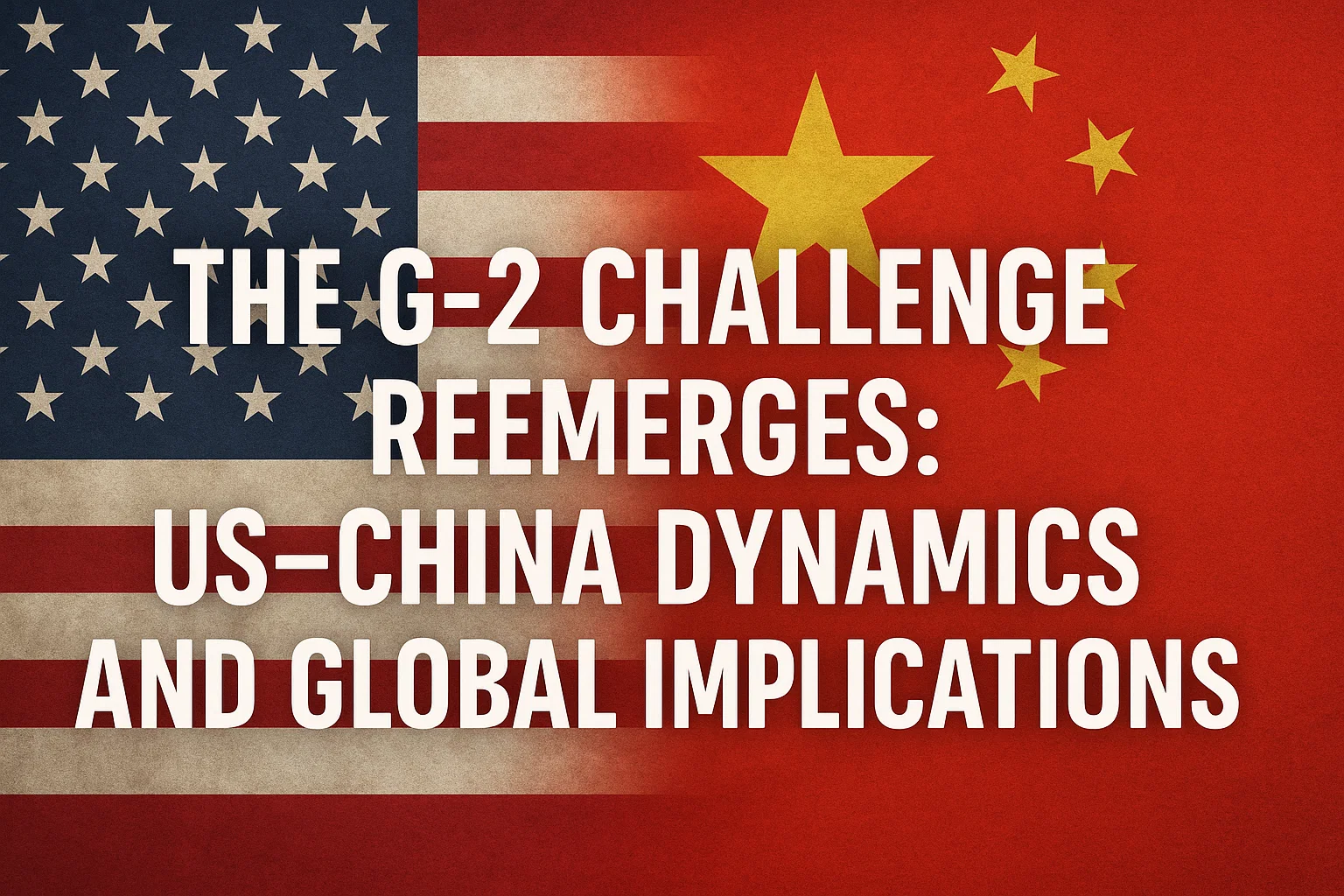The G-2 Challenge Reemerges: US–China Dynamics and Global Implications
Explore the reemergence of the G-2 concept after the 2025 Xi–Trump meeting. Understand how US–China cooperation impacts global governance, middle powers like India, and the future of the world order.
The G-2 Challenge: Understanding US–China Relations and Global Consequences
The recent Xi–Trump meeting at the 2025 APEC Summit—featuring tariff rollbacks, temporary easing of US export controls, and China’s decision to delay rare-earth restrictions—has reignited debate over the reemergence of a potential G-2 arrangement between Washington and Beijing. The notion of the world’s two most powerful economies coordinating to shape global governance evokes both hope and anxiety—hope for stability and cooperation, and anxiety for middle powers who risk being sidelined.
What is G-2?
Concept and Origin:
The G-2, or “Group of Two,” refers to a proposed US–China condominium—a global governance framework where both powers coordinate on key economic, political, and security issues. The concept gained prominence during the 2008–09 global financial crisis, when analysts argued that global stability depended on shared leadership between the United States and China.
Contemporary Context:
The idea has resurfaced after the 2025 APEC Summit, where gestures of détente—tariff reductions, suspension of chip-export restrictions, and China’s postponement of rare-earth curbs—were viewed by the global media as the revival of a “G-2 moment.” This perceived cooperation triggered anxiety among middle powers like India, Japan, and Australia, who fear that a bipolar US–China alignment could marginalize their strategic relevance and reshape global hierarchies.
Why is G-2 Significant?
-
Concentration of Global Leverage:
The US and China together dominate critical sectors of the global economy.-
The US controls high-end technology and export regimes, especially in semiconductors and advanced manufacturing.
-
China commands about 60–70% of global rare-earth processing, vital for electric vehicles, defense equipment, and renewable energy technologies.
Their bilateral actions ripple across the entire global value chain, from supply logistics to industrial production, amplifying their systemic influence.
-
-
Implications for Allies and Partners:
A potential G-2 understanding could realign global security commitments. Concerns among Japan, South Korea, Taiwan, and India emerged as Washington reassured that alliances and defense guarantees remain intact. For India, such an arrangement raises questions about whether US–China cooperation could soften the American stance on Chinese assertiveness along the Line of Actual Control (LAC). -
Impact on Global Governance:
The functioning of institutions like the WTO, IMF, and UN Security Council often mirrors the nature of US–China relations.-
A cooperative G-2 could accelerate institutional reform and enable coordinated responses to global challenges like climate change and digital governance.
-
Conversely, an adversarial G-2 could paralyze global decision-making, as witnessed during trade wars and technology sanctions between 2018–2024.
-

How Can Instability Between G-2 Disrupt the Global Order?
-
Supply-Chain Weaponisation:
The US–China tariff conflict, with American tariffs reaching up to 145%, and Beijing retaliating through rare-earth export curbs, illustrates how economic rivalry can weaponize interdependence. Global industries—from semiconductors to EV manufacturing—have faced disruptions. The Economic Survey of India even flagged the nation’s vulnerability due to its dependence on imported critical minerals. -
Security Flashpoints:
Any breakdown in G-2 engagement can heighten military and cyber tensions. Potential flashpoints include the Taiwan Strait, the South China Sea, and the digital espionage domain. Past episodes like the 2023 balloon crisis reveal how small incidents can escalate rapidly when trust is fragile. -
Shrinking Strategic Space for Middle Powers:
The more volatile the G-2 dynamic, the narrower the room for maneuver becomes for middle powers like India, ASEAN nations, and Australia.-
For India, the risk lies in being diplomatically sidelined during any Washington–Beijing rapprochement, even as the PLA continues infrastructure buildup along the Himalayan frontier.
-
Middle powers may respond through issue-based coalitions such as the Quad, or pursue strategic hedging to protect their autonomy in an uncertain bipolar world.
-
Conclusion
The reemergence of the G-2 debate underscores the fragility of the global order in an era defined by strategic competition and selective cooperation. While coordination between the US and China could help stabilize markets and address transnational crises, it also risks reinforcing bipolarity, constraining multilateralism, and marginalizing rising powers. For nations like India, the challenge lies in preserving strategic autonomy and leveraging multilateral frameworks to ensure an inclusive, multipolar global order—one that resists domination by any two superpowers.
Subscribe to our Youtube Channel for more Valuable Content – TheStudyias
Download the App to Subscribe to our Courses – Thestudyias
The Source’s Authority and Ownership of the Article is Claimed By THE STUDY IAS BY MANIKANT SINGH


